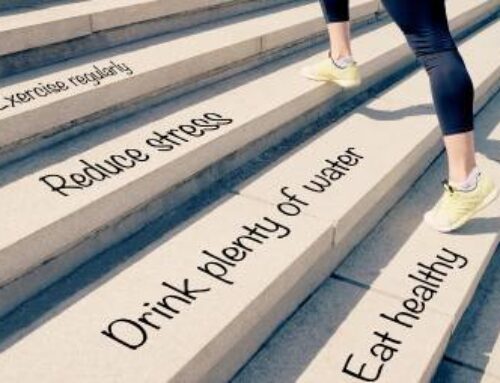5 Ways to Add Mindfulness to Your Life
 You’re ready to wind down for the night but your child wants help with their homework. Your spouse has a question that can’t wait. A friend is texting to get your reaction to a hilarious post on Instagram. Rather than relaxing, you feel your attention being pulled in every direction at once.
You’re ready to wind down for the night but your child wants help with their homework. Your spouse has a question that can’t wait. A friend is texting to get your reaction to a hilarious post on Instagram. Rather than relaxing, you feel your attention being pulled in every direction at once.
Does this scenario sound familiar? The non-stop, ever-distracted pace of daily life makes it increasingly hard for many people to focus on what’s happening right now. That’s why the concept of mindfulness has grown in popularity over the past few years.
What is mindfulness exactly? “Simply put, it’s really just a way of being,” says Jodi Nadler, a certified health coach and certified personal trainer with Atlantic Health System’s Chambers Center for Well-Being. “It’s being able to stay present in the moment, connect with your own thoughts, and remain non-judgmental of those thoughts and feelings.”
When practiced regularly, mindfulness can be the perfect antidote to the seemingly endless distractions of modern life. “Our minds aren’t designed to handle six different things at once,” Nadler says. “Mindfulness can help you choose what’s essential in that moment and stay focused on it.”
How Mindfulness Helps Both Mind and Body
Nadler breaks down the concept of mindfulness into three principles:
- Having purpose, which means intentionally directing our attention to the present.
- Presence in the moment, which means engaging in what’s happening right now.
- Acceptance, which means focusing on your thoughts, engaging with them, and doing so without judgement.
When you embrace these principles, “You take advantage of the space between experiencing something and reacting to it,” Nadler says. “That will then allow you to make better, more intentional decisions.”
The many benefits of mindfulness are rooted in science. A review of empirical studies on mindfulness, published a decade ago in the peer-reviewed journal Clinical Psychology Review, touched upon the ways mindfulness helps psychologically, physically and spiritually.
Specific benefits include reduced stress and anxiety, increased focus, improved memory recall and better control over emotional reactions. From a physical standpoint, mindfulness can help decrease blood pressure, balance cortisol levels (which are linked to conditions affecting the adrenal glands) and help with immune function. Mindfulness also teaches self-discipline, compassion and empathy.
How to Build Mindfulness Into Daily Life
At the Chambers Center, mindfulness is a central part of Health Coaching, a one-on-one approach designed to help people make positive, holistic changes in their overall wellness. It’s also an element of the Lifestyle Change Program, an eight-week course that helps people build sustainable, healthy habits to transform their minds and bodies.
But the neat thing about mindfulness is that you don’t have to take a class, download a meditation app, or practice yoga to learn about it. “You can make mindfulness a routine part of your day—just like brushing your teeth—by making a few simple changes,” Nadler says.
Five easy ways to add mindfulness to your life:
- Make the time for mindfulness
In the same way that you must make time to exercise each day, do the same for mindfulness. “Start by setting aside five minutes for a morning intention, deep breathing or other mindful activity,” Nadler says.
- Focus on your breathing
Pay attention to the way your breath comes in and out of your mouth. Put your hand on your heart and belly and feel the effects of your breath. “You can do this before a stressful meeting or to wind down at the end of the day as a way to rebalance yourself,” Nadler says.
- Intentionally connect with nature
A walk outdoors can bring big benefits. Says Nadler: “As you walk, feel the weight shifting between your feet. You’ll be surprised at how that helps to clear your mind.”
- Journal
“This is different from keeping a diary as a teenager,” Nadler says. Journaling for mindfulness means writing down your thoughts, focusing on how you are feeling, learning how certain words may trigger your mind, and taking inventory of how you’re doing that day.
- Stop your racing mind in its tracks
If you feel unfocused, stop what you are doing, intentionally pick out an essential thing nearby—a photo, a water bottle, a lamp—and focus on the object. “You can then pick out four other things you see, hear or feel,” Nadler says. “This helps you bring your body back in touch with itself.”
The most crucial step with mindfulness is getting started. “Mindfulness doesn’t have to be complicated,” Nadler says. “And it brings so many benefits that it’s almost too important to ignore.”
Interested in well-being services like Health Coaching or HeartMath? Book an appointment online or call us directly at 973-971-6301.















Get Social